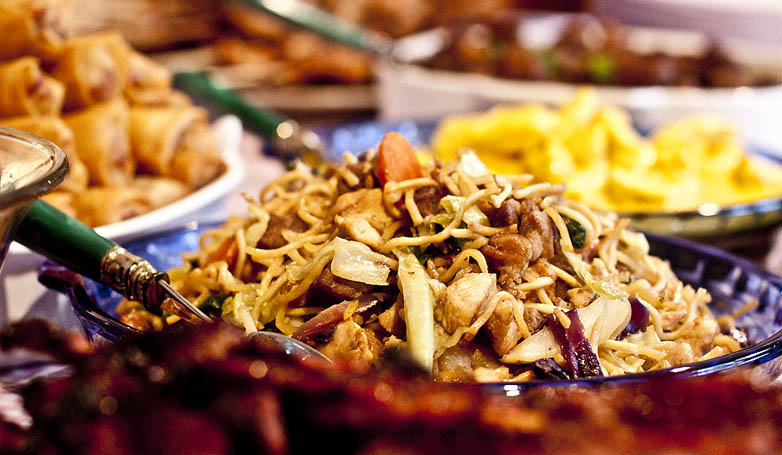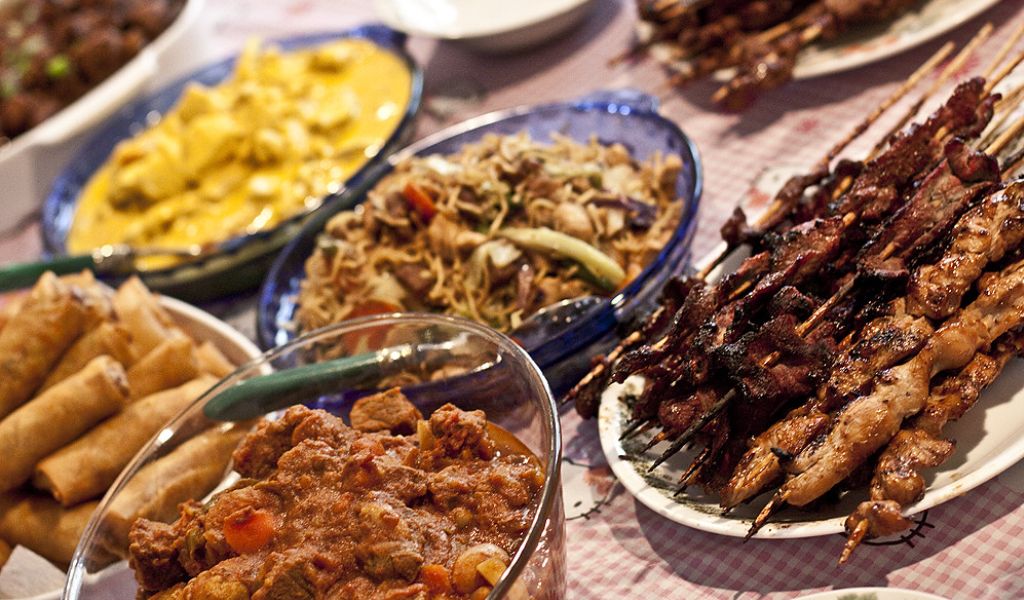Embark on a Calabarzon Food Delicacies – Calabarzon’s Finger-Licking Delights!
Welcome, food aficionados! You’re about to embark on a flavorsome journey through the heart of Calabarzon—a culinary treasure trove in the Philippines that promises to tantalize your taste buds. Nestled in the lush landscapes of the Southern Tagalog region, Calabarzon is not just rich in history and culture; it’s also a vibrant hub for some of the most mouth-watering food delicacies you’ll ever come across.
From sweet treats to savory masterpieces, Calabarzon’s food scene is as diverse as its heritage. Whether you’re a gastronomic globetrotter or a local foodie searching for new tastes, the region’s distinctive dishes are sure to leave a lasting impression. So, let’s get ready to dive into the top must-try Calabarzon food delicacies that truly embody the soul of Filipino cuisine!
1. Pagsanjan Falls’ Majestic Munch – Bibingka

Bibingka is a beloved Filipino rice cake traditionally enjoyed during the Christmas season, especially in the Calabarzon region. This soft, fluffy, and slightly sweet delicacy is made from rice flour, coconut milk, and eggs, creating a unique texture that sets it apart from other rice cakes. The batter is poured into clay pots lined with banana leaves, which impart a subtle, earthy flavor and prevent sticking.
Bibingka is often topped with a delightful combination of salted duck eggs, grated coconut, and cheese, balancing sweetness with a hint of savory richness. It’s commonly enjoyed warm, fresh from local bakeries or food stalls, and served with a side of hot tea or coffee. This classic Filipino treat brings families and communities together, embodying the warmth and festive spirit of the holiday season in Calabarzon.
2. Lipa City’s Signature Sip – Kapeng Barako

Kapeng Barako is a robust and aromatic coffee variety native to the province of Batangas in the Calabarzon region of the Philippines. Known for its strong and bold flavor, Kapeng Barako comes from the Coffea liberica species, which is less common than the widely grown Coffea arabica and Coffea robusta. This distinct coffee has a deep, earthy taste with hints of chocolate and a slightly smoky finish, making it a favorite among Filipinos who enjoy their coffee intense and full-bodied. Traditionally brewed using a simple boiling method, Kapeng Barako is often enjoyed black to appreciate its natural strength, though some drinkers add sugar or milk for a smoother experience.
Beyond its unique flavor, Kapeng Barako holds cultural significance in Batangas and nearby areas, symbolizing resilience and pride, as it has withstood economic challenges and foreign competition. A cup of Kapeng Barako is more than just a morning pick-me-up—it’s a connection to Filipino heritage and the hardworking coffee farmers of Batangas.
3. Lucban’s Long and Luscious – Pancit Habhab
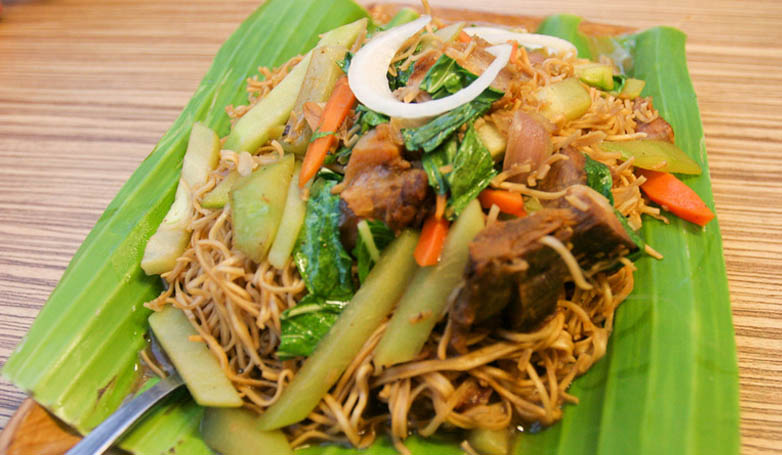
Pancit Habhab is a popular noodle dish from the province of Quezon in the Calabarzon region, known for its distinct serving style and local flavors. Made with sautéed miki noodles, which are thicker and chewier than typical noodles, Pancit Habhab is cooked with a mix of vegetables like cabbage and carrots, and often includes pork or shrimp for added flavor. It’s seasoned with garlic, soy sauce, and sometimes fish sauce, giving it a savory, slightly salty taste that’s balanced with a splash of vinegar.
What makes Pancit Habhab unique is the way it’s traditionally served: on a banana leaf, without any utensils. Locals and visitors alike enjoy eating it directly from the leaf by “habhab”—slurping the noodles straight into their mouths. This informal and fun eating style enhances the dish’s authenticity, connecting diners to the vibrant culture of Quezon province.
4. Sweet Surrender in Tayabas – Budin (Cassava Cake)
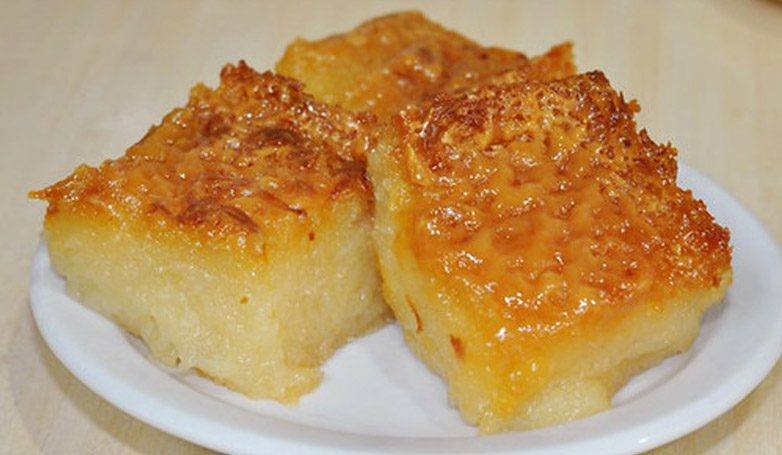
Budin, also known as cassava cake, is a beloved delicacy in the province of Quezon, particularly popular in the town of Tayabas. This Filipino dessert is made primarily from grated cassava, coconut milk, and condensed milk, creating a creamy, rich, and slightly chewy texture that’s both filling and indulgent. Baked to golden perfection, Budin has a caramelized top layer that adds a hint of sweetness and a pleasant contrast to the dense, custard-like body.
Often served in slices and enjoyed during special occasions or festive gatherings, Budin represents the creativity and resourcefulness of Filipino cooking, transforming local ingredients into a flavorful treat. It’s a satisfying dessert that reflects the warmth and hospitality of Quezon, offering a taste of traditional Filipino flavors in every bite.
5. San Pablo City’s Crunchy Concoction – Colette
San Pablo City in Laguna is famous for its crunchy and delectable treats, and “Colette’s” stands out as a premier destination for such delicacies. Known for its renowned buko pie, Colette’s combines fresh, tender young coconut meat with a creamy filling and wraps it in a perfectly flaky crust that delivers a delightful crunch with every bite. This savory-sweet concoction has earned Colette’s a loyal following among locals and tourists alike, making it a must-stop shop for anyone passing through San Pablo.
Beyond its iconic buko pie, Colette’s also offers a variety of other Filipino treats, such as cassava cake and espasol, showcasing the flavors and textures unique to Laguna’s culinary landscape. With each treat crafted to highlight the freshness and quality of local ingredients, Colette’s captures the spirit of San Pablo’s love for authentic and satisfying Filipino snacks.
6. Antipolo’s Heavenly Harvest – Suman
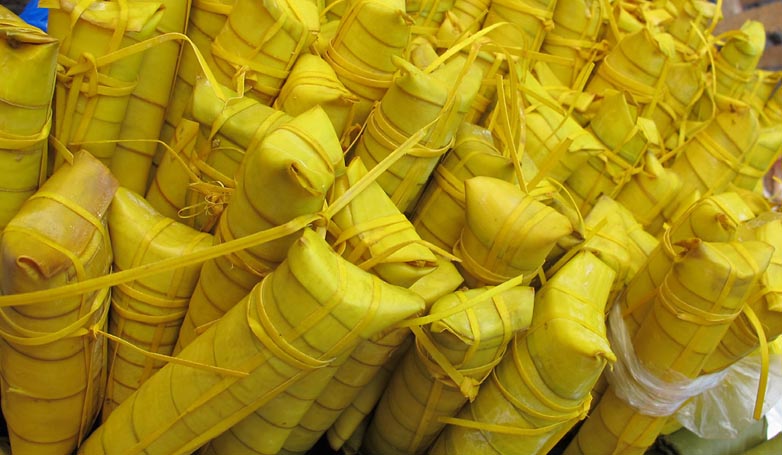
Antipolo City is celebrated for its “heavenly harvest” known as suman—a traditional Filipino rice cake made from glutinous rice and coconut milk, wrapped in banana leaves, and steamed to perfection. This delicacy is cherished for its soft, chewy texture and subtly sweet flavor, capturing the natural taste of coconut-infused rice. Antipolo’s suman is often enjoyed with a sprinkle of sugar, a dip in rich caramel sauce, or paired with ripe mangoes, enhancing its appeal as a simple yet delightful treat.
Locals take pride in the craftsmanship involved in preparing suman, which has become a popular pasalubong (gift) for visitors to bring back to their families and friends. Beyond its delicious taste, Antipolo’s suman represents a connection to the region’s agricultural roots and a tradition passed down through generations, making it a true “heavenly harvest” that celebrates Filipino culture and community.
7. Batangas’s Beefy Best – Bulalo

Batangas is renowned for its “beefy best” dish, Bulalo, a comforting Filipino soup that highlights the rich flavors of tender beef shank and bone marrow. This local favorite is slow-cooked to perfection, allowing the meat to become succulent and the marrow to melt into the broth, creating a savory depth that’s both hearty and satisfying. Batangas Bulalo stands out not only for its robust flavor but also for the addition of fresh vegetables like corn, cabbage, and green beans, which balance the richness of the broth and add a touch of sweetness.
Typically served piping hot, Bulalo is best enjoyed in Batangas’s cool, highland towns, where its warmth provides a comforting experience. For locals and visitors alike, a bowl of Bulalo represents more than just a meal—it’s a taste of Batangas’s culinary heritage and the region’s reputation for producing quality beef, making it a must-try dish for anyone exploring the area.
8. Cavite’s Coastal Catch – Tahong Chips

Cavite’s “coastal catch,” tahong chips, offers a unique and flavorful twist on traditional seafood snacks. Made from fresh green mussels, locally known as tahong, these chips are prepared by cleaning, boiling, and finely chopping the mussels, which are then mixed with flour and seasonings before being fried to a delightful crisp. Each bite captures the essence of the ocean, with a briny, savory flavor and satisfying crunch that appeals to both locals and tourists.
This inventive delicacy highlights Cavite’s rich marine resources and creativity, turning a common shellfish into an innovative and delicious snack. Tahong chips are often enjoyed on their own or with a tangy dipping sauce, and they make a popular pasalubong (souvenir) that showcases the coastal heritage of Cavite. With their addictive taste and unique origin, tahong chips perfectly capture the essence of Cavite’s culinary ingenuity and love for seafood.
9. Quezon Province’s Pride – Yema Cake
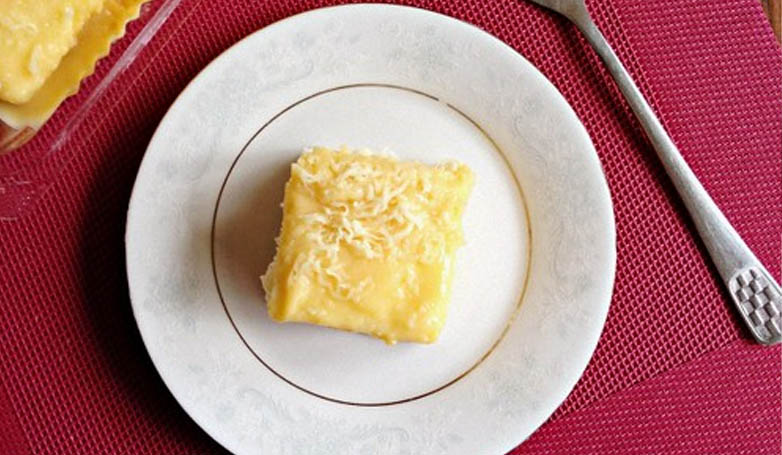
Quezon Province takes pride in its signature dessert, Yema Cake—a decadent, melt-in-your-mouth confection that has captured the hearts of locals and visitors alike. This rich, fluffy sponge cake is layered and topped with a creamy yema spread, made from egg yolks, condensed milk, and butter, creating a sweet and custard-like texture that beautifully complements the soft cake. Often topped with grated cheese, the cake strikes a perfect balance between sweetness and a hint of saltiness, adding an extra layer of flavor that makes it irresistible.
Yema Cake has become an emblem of Quezon’s culinary creativity, with bakeries across the province showcasing their unique versions of this treat. It’s a popular pasalubong (gift) for travelers to bring home, symbolizing the warmth and sweetness of Quezon’s hospitality. With every bite, Yema Cake offers a taste of Quezon’s rich tradition and love for indulgent, well-crafted desserts.
10. Taysan’s Tropical Treat – Espasol

Taysan, a town in Batangas, is known for its delightful tropical treat—Espasol, a traditional Filipino rice cake that perfectly embodies the region’s love for sweet, chewy snacks. Made from glutinous rice flour, sugar, and coconut milk, Espasol is cooked into a soft, sticky dough, then rolled in toasted rice flour, giving it a unique texture and a delicate, nutty flavor. The treat’s sweet, comforting taste is often enjoyed during special occasions or as an afternoon snack, typically served in bite-sized pieces.
Espasol is a reflection of Taysan’s agricultural richness, using locally sourced ingredients like rice and coconut to create a delicious, satisfying dessert that resonates with the Filipino love for simple yet flavorful treats. This tropical snack is not only a favorite among locals but also a beloved pasalubong (souvenir) for those who want to bring a taste of Taysan home.
Sweet, Savory, Sensational: Calabarzon’s Delighterful Delicacies!
As we wrap up our delectable tour of Calabarzon’s culinary wonders, it’s clear that the region’s palate-pleasing dishes are as colorful and dynamic as its people. Each morsel tells a story, each bite is a testament to tradition, and every taste leaves a rich aftertaste of culture.
From the coffee connoisseurs to the sweet seekers, Calabarzon has a delicacy for everyone—forging an edible bond between the land and its bounty. The next time you find yourself wandering through the Southern Tagalog region, be sure to indulge in these must-try food delicacies. After all, in a place where feasting is part of the daily fabric, the eventual love affair with Calabarzon cuisine is an essential part of the journey.
Remember, food is not merely sustenance; it’s a discovery, a celebration, and an everlasting love story. Mabuhay at kain an! After the delicious foods, try to visit Tourist Spots in Calabarzon.
FAQs About The Calabarzon Food Delicacies
1. Are there any exotic or unusual foods to try in Calabarzon?
While most of the foods in Calabarzon are widely enjoyed, some may find certain local delicacies exotic, such as:
- Adobong salagubang (June beetle cooked in vinegar and soy sauce) from Laguna
- Tapang usa (marinated and dried deer meat) from Batangas
- Kinilaw (raw seafood dish) made with various local fish or meat
2. Are there vegetarian options in Calabarzon delicacies?
Vegetarian options might be more limited in a traditionally meat-rich Filipino culinary scene, but there are some vegetarian-friendly dishes, such as:
- Pancit Habhab can be made without meat.
- Kesong puti is a soft white cheese that can be enjoyed on its own or with bread.
- Many sweet treats like buko pie, espasol, and bibingka are typically vegetarian.
3. How is Batangas coffee different from other coffees?
Batangas coffee, known locally as Kapeng barako, is distinct for its strong flavor and aroma. It is made from Liberica beans, which are larger and have a more intense taste compared to Arabica and Robusta beans commonly found in other coffee-producing regions.
4. Can I find Calabarzon food delicacies outside of the Philippines?
Yes, some Calabarzon food delicacies may be found in Filipino stores or restaurants overseas, especially in places with significant Filipino communities. Items like bottled kapeng barako, packaged longganisa, and ready-to-eat sweets might be more readily available.

